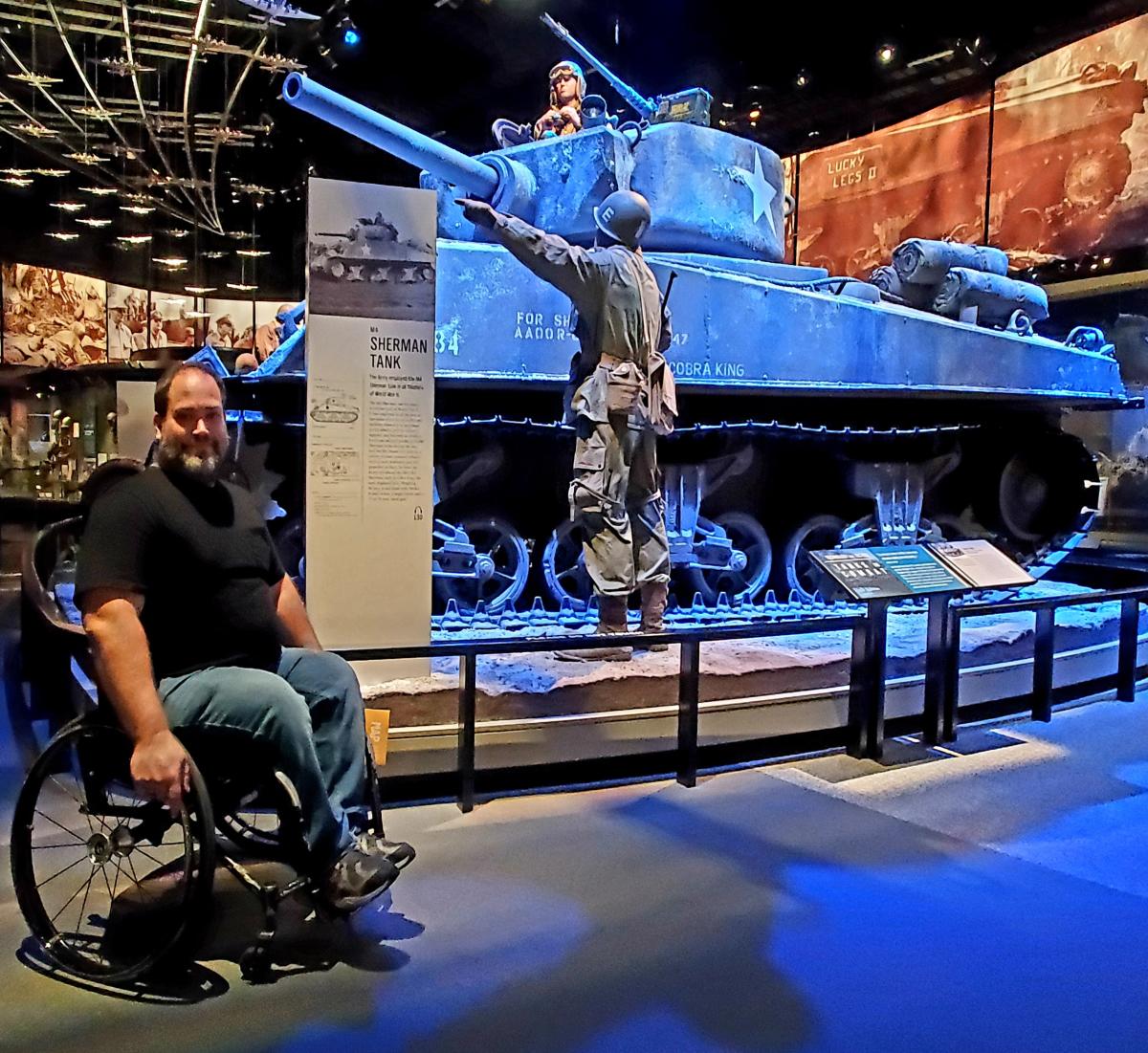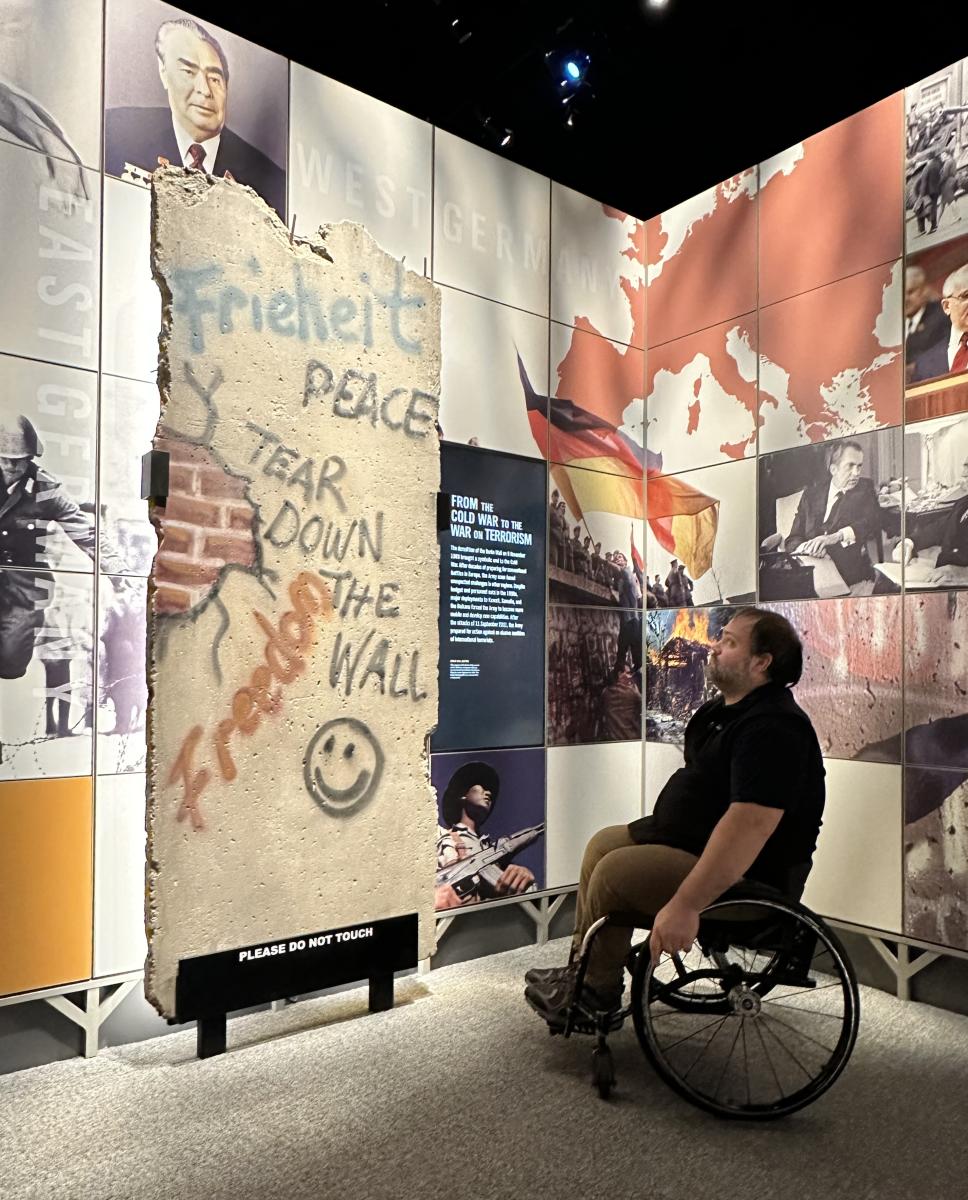Trust us when we say that you’ll conclude your visit to the National Museum of the United States Army with expanded knowledge and reverence for Army personnel, their stories, and the sacrifices and impact the Army has had on the world we see today.
With an emphasis on soldiers' narratives, the National Museum of the U.S. Army encapsulates more than 245 years of history in a new, state-of-the-art facility. The museum is located on the grounds of Fort Belvoir, but you don't need special clearance to visit. Designed to reach various audiences and age groups, the museum offers experiences that include multiple video/film elements and highly visual, interactive, and tactile exhibits with content you can read at your leisure. It is comprehensive and in-depth without being overwhelming.

We were blown away by all the accessibility, language features, and expanded accommodations in place. The museum is genuinely committed to providing an inclusive experience for all. Accommodations include hand controllers that plug into interactive exhibits if you can't reach up to touch screens, audio tours with printed scripts and assisted listening systems, wheelchairs for rent, tactile guides, guides in several languages, captions on videos, and much more! Nursing pods are available for added privacy for families with nursing babies, and a wheelchair-accessible pod is included. All can be checked out for free with an ID at the Welcome Desk. No need to call ahead! This should be normalized and the gold standard! Additional accessibility information.
 In front of the Campaign Wall in the main lobby entrance
In front of the Campaign Wall in the main lobby entrance
Soldiers’ Stories Gallery and Campaign Wall
Your museum experience starts before you enter the building with the Soldiers’ Stories gallery, a series of poignant pylons etched with an image of a soldier throughout U.S. history that includes personal accounts from their time in the Army. Drawing you in immediately, this is the heart of the museum and puts faces and names to an institution that many may associate with politics, conflict, war, and loss of life.
On the far side of the lobby as you enter is the U.S. Army Campaign Wall which lists every war and its subsequent parts. Alongside each campaign is its corresponding ribbon. These ribbons can also be seen lining the lobby’s ceiling, so don’t forget to look up.

In front of an American Flag display with statistics related to World War II
Army Theater
The film “Of Noble Deeds” plays in a 300-degree screen theater with sensory technology. With several showings each hour, we recommend starting your visit with this incredibly moving film.
The 20-minute movie defines what it means to be an American Soldier and includes footage of soldiers, current Army operations, and some re-creations of its most significant battles. As a standard practice, one showing every hour includes adjustments for sensory elements and closed captions for individuals who may be sensitive to sensory stimulation or have a hearing impairment.

In front of the Sherman Tank
Army Concourse
The Army Concourse section of the museum takes you on a chronological journey from before the nation was formed to the present day and allows you to see the evolution of the Army, its equipment, and its tactics. This series of seven exhibits line this hallway and includes Founding the Nation, Preserving the Nation, Nation Overseas, Global War, Cold War, Changing World, and Army and Society.
Experiential Learning Center
A highly interactive space devoted to learning and testing skills required in today’s Army, the Experiential Learning Center offers Geography, Science, Technology, Engineering, and Math (G-STEM) activities through gaming. From locating objects around the room by controlling the camera on a drone, finding targets in different spectrums of light, using geographical data to locate places, dropping payloads from a helicopter using mathematical calculations, repairing bridges, and diagnosing medical conditions, the Learning Center provides you with a memorable experience and new skills!
Tip: If you have difficulty reaching the touchscreens, ask for a game controller at the front desk. Plug it in anywhere you see a wheelchair symbol at these stations to interact with these games at a lower height.
Army Action Center
The Army Action Center, located at the end of the Army Concourse, offers three virtual reality (VR) experiences for a fee. The experiences are Holdout! Bunker Defense (a VR game against robots), Tank Commander (an interactive VR experience from the perspective of a tank commander/gunner), and the Army Action Pod Simulator (takes you through 110 years of flight). Holdout! Bunker Defense can be played from a wheelchair, but the other experiences have steps to enter.

Looking at a piece of the Berlin Wall
Upper Levels
Spread over the second and third floors of the museum are the Special Exhibition Gallery, Medal of Honor Experience, Medal of Honor Garden, and Nisei Soldier Experience. The Special Exhibition Gallery houses temporary exhibits, and during our visit, it featured an exhibit on Bob Hope and the impact he had on soldiers' lives and the nation's morale during wartime.
The Medal of Honor Experience highlights the history of the Medal of Honor and the recommendation process for this nation's highest award for valor. The neighboring Medal of Honor Garden honors U.S. Army recipients.
Finally, through a collection of artifacts, the Nisei Soldier Experience takes you through the story of the Japanese American Nisei Soldiers of World War II, both at home and overseas. The journey includes the wait for recognition, which came in the form of the Congressional Gold Medal, the nation's highest civilian award.
While we aren't veterans, we have family members who have served in the Army. You'll be hard-pressed to leave the museum without renewed patriotism and a better understanding of our nation's history, at the heart of which you'll find the United States Army.
*This guest blog is the result of a collaboration with www.photoswithaspin.com. Check out Abe & Maggie's suggestion for an accessible weekend getaway in Fairfax County. This includes Smithsonian’s National Air and Space Museum Steven F. Udvar-Hazy Center. Check back each month for more in our accessible travel series with Abe & Maggie!*





